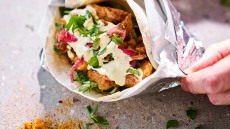Soy animal feed’s trail of deforestation: What are the solutions?

Soy is well-known for its significant presence in meat substitute products, with companies such as Heura, THIS, and the Vegetarian Butcher using it. This has even led to claims that the vegan lifestyle is greatly harming the environment.
However, only about 20% of soy is used in products for humans, with less than half of these for vegetarian and vegan products. The vast majority – nearly 80% - of soy is grown to feed animals. This soy is often grown on land cleared through deforestation, which is a significant cause of climate change as trees absorb carbon dioxide, a greenhouse gas.
“Currently, the food system is part of the problem,” said Nicola Brennan, Conversion Free Supply Chains policy officer at WWF. “The expansion of crops like soy, the vast majority of which goes into livestock feed, is driving deforestation and conversion of precious habitats like the Cerrado in Brazil.”
Devastation
Soy production leads to great ecological damage. While not as significant a cause as pasture for beef production, using it has still led to a significant amount of deforestation, WWF told FoodNavigator.
In fact, soy production has doubled over the last two decades. Much of it relies on turning savannahs, grasslands and indeed forests into land where soy can be grown.
While the US and Brazil are the leading producers of soy, the biggest importers of the crop for animal feed are actually China and the EU. The UK is also a significant importer, with 3 million tonnes per year, which needs a land area roughly 11 times the size of Greater London to grow, going into the country. A full 77% comes from places of high deforestation risk.
Soy is a popular crop for animal feed because of its high protein content. Thus, the food system needs to find a replacement that is both more sustainable and provides the protein that animals need.
Solutions
A 2021 study by Capestone, an organic farm, shows that soy can be replaced by pea protein in chicken feed without sacrificing any quality in the chickens themselves. The pea is high in protein and thus provides a solid protein substitute for soy. It is also considered sustainable.
The study, which was supported via the ‘Future Foods Wales’ project which is the co-located project with access to AberInnovation facilities, traced the weight and colour of the chickens over time as they consumed the altered feed. The soy bean that would normally have been in the feed was gradually replaced by the white field pea.
As the soy bean was substituted, the colour of the chickens increased in redness and yellowness, because of the increase of their increased intake of carotene, a pigment found in plants that gives them colour. However, in the end this did not affect the colour of chickens when displayed in retailers. The chickens also had a low shear force, meaning they were tender.
This suggests that change in feed does not reduce the quality of the meat, and that animal feed does not need to rely on soy.
The calories from edible crops fed to animals would be enough to feed 4 billion people.
The WWF also suggested some solutions to the problem of soy-based feed. Their 2022 Future of Feed Report suggests that livestock, rather than eating soy feed, should switch to ‘lower opportunity cost’ feeds such as grassland, insect meal or seaweed.
By using agricultural by-products, the report suggests, the demand on agricultural land will be significantly reduced. ‘Low opportunity cost’ essentially means giving animals food that wouldn’t be used for people, as opposed to ‘high opportunity cost’ food which people could eat if animals were not given it.
The report suggests using human food waste – one third of food globally – to feed animals, which won’t cost any calories to humans.
Care must be taken that animals get the right nutrients from low opportunity cost feed. For example, dairy cattle, when eating a diet of grass, have a reduced milk yield, but when eating rapeseed cake their milk yield is actually increased.
However, WWF was adamant that changing animal feed alone is not enough to make the food system sustainable.
“We cannot put our food system on a sustainable footing if we continue to produce livestock at current volumes,” they said. “In countries with very high levels of meat and dairy consumption, like the UK, we need to reduce meat and dairy . . . and embrace more plant rich diets.”
















